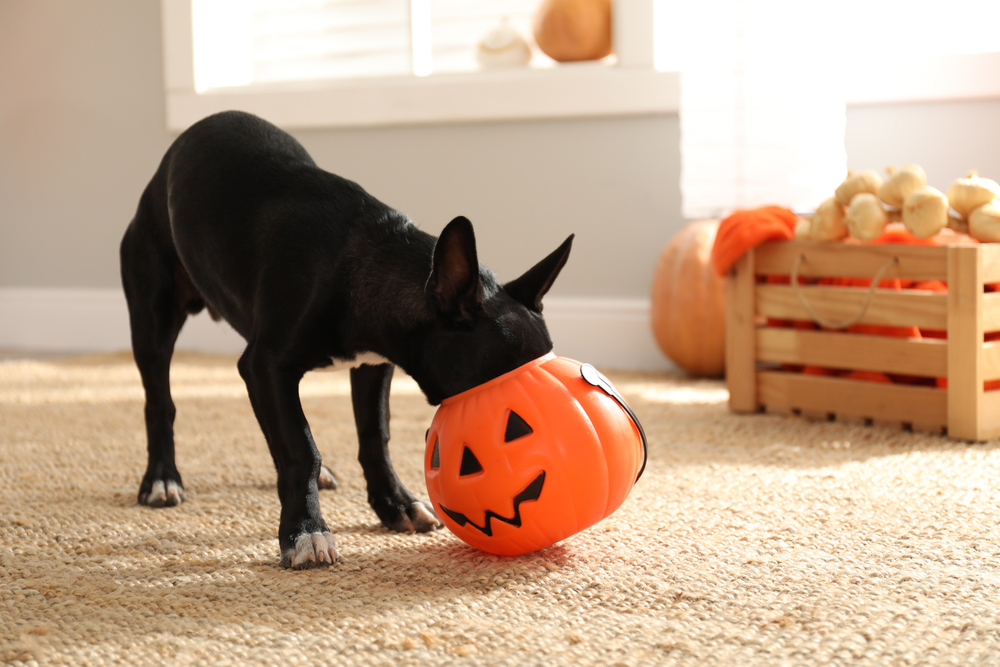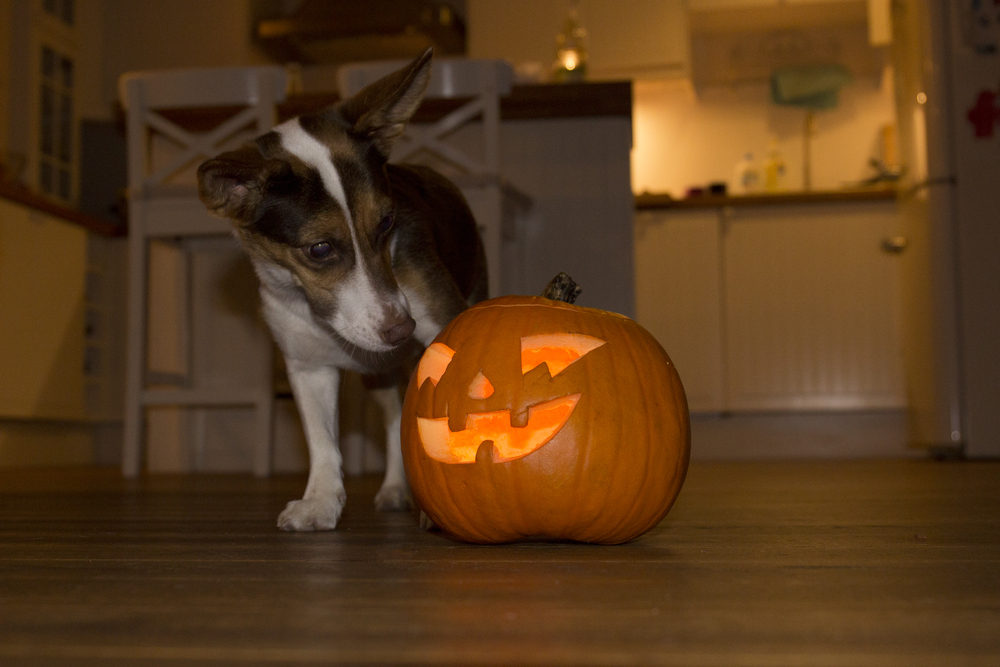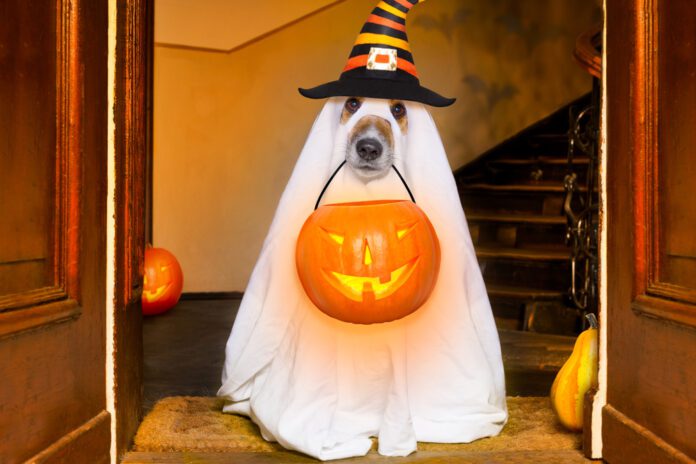This October, children and adults of all abilities are focused on costumes, candy and all things pumpkin spice. A whopping 69% of consumers plan to celebrate this spooky holiday, which is an increase from 65% reported in 2021 (during the pandemic), according to the National Retail Federation’s annual survey. Ghosts, vampires, werewolves and witches aside, Halloween can be a scary time for service dogs, companion animals and family pets. Have no fear… AmeriDisability is treating you to a list of Halloween safety tips to keep your howling hounds and black cats safe.
1. Candy is Not So Dandy
Reserve the Halloween candy for trick-or-treaters only! According to the ASPCA, several popular Halloween treats are toxic to pets. Chocolate in all forms—especially dark or baking chocolate—can be very dangerous for cats and dogs. Plus, sugar-free candies containing the sugar substitute xylitol can cause serious problems in animals.
Be sure to trash all wrappers properly. Animals, especially batty cats, like to play with balled-up wrappers that resemble toys. However, ingesting aluminum foil or cellophane can cause intestinal blockages and induce vomiting.
2. Pumpkin Spice is Not So Nice
While non-toxic, not all forms of pumpkin are safe for your monster mutt. Plain pumpkin, and even some seeds, is typically okay and even nutrient-dense when consumed in moderation. However, anything pumpkin spice isn’t as nice! Pumpkin pie filling contains added fat, sugar and spices like cinnamon, cloves, ginger and nutmeg; some of which can be toxic to dogs.

Pumpkin isn’t the only fruit/veggie that animal owners should be mindful of. If you have fall-colored corn cobs on display near your pumpkins, be sure that your animal doesn’t nibble on them as corn kernels can obstruct the intestinal tract.
3. Sniffing Out Trouble
The crisp air is full of seasonal scents, like apple cider, cinnamon and pumpkin spice, thanks to the flicker of fragrant candles. Do be mindful that strong scents can overwhelm an animal’s senses and even ignite hazards. When your curious canine is near, take caution when lighting candles or when sipping a pumpkin spice latte by the fire pit.
4. Doggone Decorations
Fun Halloween décor can help you enjoy this holiday even more. But, similarly to the scented candle caution, take note of fire hazards associated with candle-lit Jack-O-Lanterns. You wouldn’t want your furry friend to be burned by your festive porch display. In addition to candles, artificial lights add another potential hazard for hounds. Be sure your pooch can’t nibble on electrical cords or low-handing decorative light strings.
5. Stray Away
On Halloween night, you may have many visits from trick-or-treaters, meaning frequent opening and closing of the front door. Stay aware of your animal’s access to the door and ensure that tag identifications and microchips are up-to-date.

6. Haunted Hound
Your service dog, companion animal and pet are, of course, part of the family. But sidewalks overflowing with loud, costume-clad kiddos may be overwhelming for some animals. Service and/or companion animals are essential for many people with disabilities but, for those who can spare Fido a scare, consider leaving your animal at home; but, again, only if this is not a hindrance or threat to your health and safety(not typically applicable with service animals.
7. Tail-Wagging Trick-or-Treating
If you do decide to venture out on Halloween night with your dog, make sure he/she is on a secure leash. Since the time change means darkness falls earlier, consider outfitting your tail-wagging pal with a reflective collar. And, as you wander the neighborhood, ensure that your animal doesn’t chew on glow sticks that may have been accidentally dropped by trick-or-treaters.
8. Costumed Canines
If you love dressing your fur baby up, you might be eyeing a costume for Halloween. Note that animal attire should not be too snug or baggy, restrict mobility or breathing, or hinder the ability to go to the bathroom or communicate. Costumes should be free of choking hazards (i.e. beads, buttons, feathers, etc.).
If you suspect your pet has ingested something toxic, please call your veterinarian or the ASPCA Poison Control Center at (888) 426-4435 immediately.






